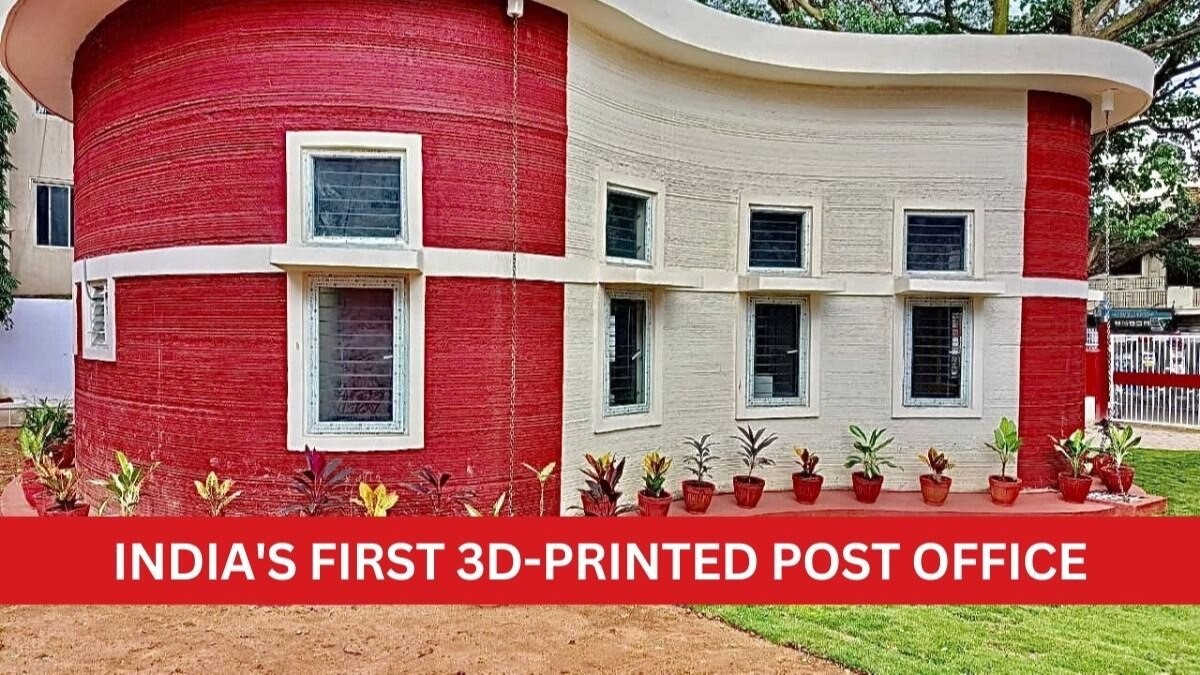Description

Disclaimer: Copyright infringement not intended.
Context
- India marked a significant technological leap with the inauguration of its maiden 3D-printed post office in Bengaluru’s Cambridge Layout.
- The post office, built by Larsen & Toubro Limited in collaboration with IIT Madras, showcases the practical applications and efficiency of 3D printing technology.
Details
Understanding 3D Printing
- 3D printing, also known as additive manufacturing, constructs three-dimensional objects layer by layer using computer-generated designs.
- Unlike conventional manufacturing methods that involve material subtraction, 3D printing is additive.
- It employs materials like plastics, composites, or bio-materials to gradually create objects with precision in shape, size, rigidity, and color.
Basic Principles of 3D Printing
- Layer-by-Layer Construction: Unlike traditional subtractive manufacturing, which involves removing material from a larger block, 3D printing builds objects layer by layer, adding material to create the final product.
- Digital Design: A 3D model of the object is created using computer-aided design (CAD) software. The digital design is then sliced into thin horizontal layers, which serve as a blueprint for the printer.
- Material Deposition: Various materials, including plastics, metals, ceramics, and even biological tissues, can be used as the "ink" for 3D printers. The printer deposits material layer by layer, following the design specifications.

Applications of 3D Printing
- Manufacturing: 3D printing has revolutionized manufacturing by enabling rapid prototyping, reducing production time, and minimizing waste. Complex geometries and intricate designs that were once challenging to create are now achievable with precision.
- Healthcare: In the medical field, 3D printing is used to create patient-specific implants, prosthetics, and even organs. Customized medical devices and models for surgical planning enhance patient outcomes.
- Aerospace: Aerospace industries utilize 3D printing to manufacture lightweight and durable parts, reducing aircraft weight and fuel consumption. This technology also enables rapid iteration of design improvements.
- Automotive: The automotive sector benefits from 3D printing for producing intricate components, optimizing vehicle design, and creating prototypes for testing.
- Fashion and Design: Designers leverage 3D printing to create unique and intricate fashion pieces, jewelry, and accessories that were once impossible to achieve with traditional methods.
Advantages of 3D Printing
- Customization: 3D printing allows for individualized and customized products tailored to specific needs or preferences.
- Complex Geometries: The technology can create intricate and complex geometries that would be challenging or impossible to achieve using conventional manufacturing techniques.
- Reduced Waste: Unlike subtractive manufacturing, where excess material is removed, 3D printing adds material only where needed, minimizing waste.
- Speed and Efficiency: 3D printing reduces production time, enabling rapid prototyping and iteration of designs.
Challenges and Future Prospects
- Material Limitations: While 3D printing offers versatility in material options, certain advanced materials may be challenging to work with or expensive.
- Quality Control: Ensuring consistent and reliable quality in 3D printed products can be challenging, especially for critical applications.
- Regulatory and Legal Issues: As 3D printing evolves, challenges related to intellectual property rights, safety regulations, and quality standards need to be addressed.
- Bioprinting: The field of bioprinting holds potential for creating functional organs and tissues for transplantation, but ethical, technical, and regulatory challenges remain.
Future Impact
- Decentralized Production: 3D printing could lead to a shift from centralized mass production to localized manufacturing, reducing transportation and carbon footprint.
- Space Exploration: 3D printing offers the potential to create tools, equipment, and even habitats on other planets, reducing the need for transporting materials from Earth.

Conclusion
India's debut of a 3D-printed post office underscores its progress in advanced manufacturing technologies. This achievement not only demonstrates the efficiency of 3D printing in construction but also reflects its potential to reshape industries, drive innovation, and contribute to economic growth. As technology continues to evolve, 3D printing holds the promise of revolutionizing traditional manufacturing methods and enhancing customization and efficiency across various sectors.
|
PRACTICE QUESTION
Q. Discuss the transformative impact of 3D printing on various industries and its potential implications for the future. Elaborate on the concept of decentralized production and its relevance in the context of 3D printing. (250 Words)
|
https://indianexpress.com/article/explained/everyday-explainers/how-does-3d-printing-work-8898689/











